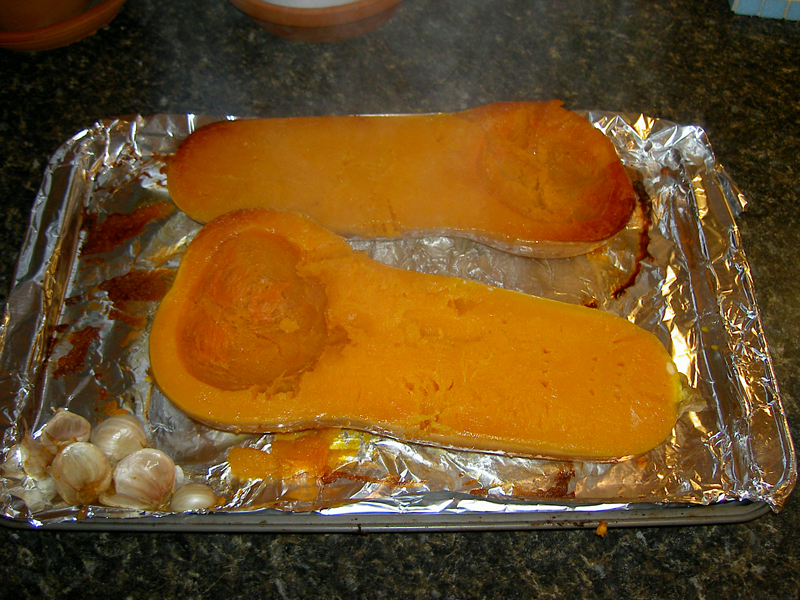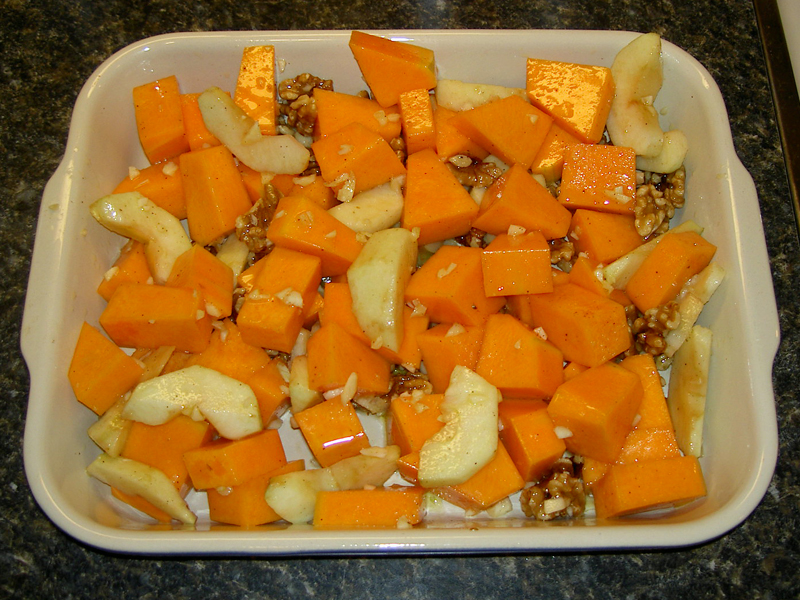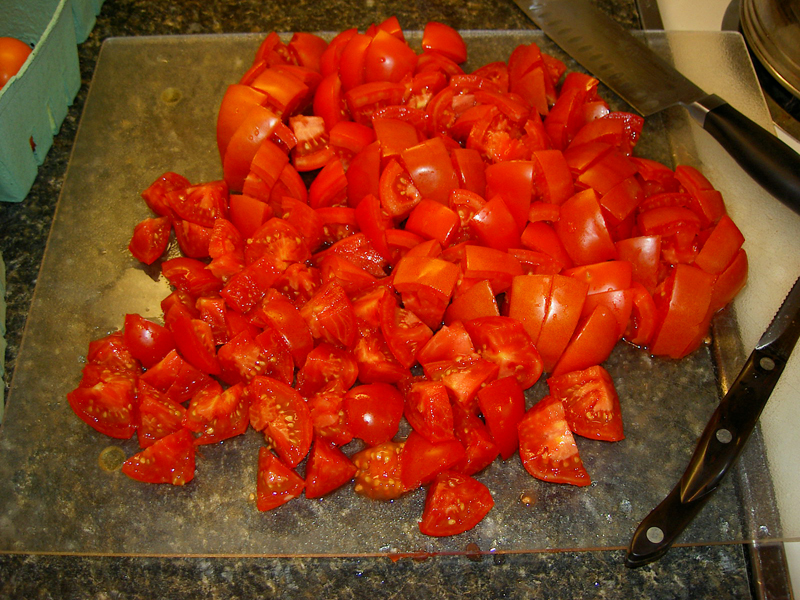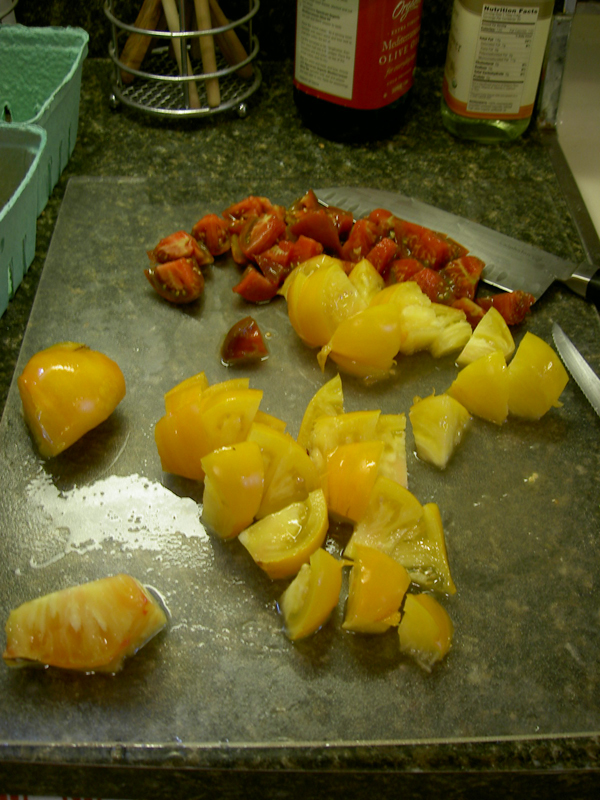
Squash!
This summer we received a lot of squash from our farm share, and I do mean that nearly literally. Four butternut squashes and about that much again of an enormous squash called courge longue de Nice, which I had neither heard of nor seen before joining our CSA. In addition to this bounty, I picked up a couple of small pie pumpkins when they appeared at the market last week, as I’ll be bringing pies to our friends’ Thanksgiving dinner this year. When we received the first hunk of courge longue — a squash so big that only a piece of it nearly filled our weekly box — I cubed it, tossed the pieces with olive oil, minced garlic, salt, and pepper and then roasted it into submission until it was soft and sweet. I confess that I tried this approach last year and didn’t peel it or cook it long enough and it was bitter; as a result I let one of last year’s lovely huge specimens go to waste, a loss I am trying to avoid this year.
At any rate, we ate an entire dinner of squash (pretty much) and it didn’t seem to make any kind of dent in the stores. Which is good in the return on investment framework and not as good for the hope of ever eating anything other than squash again. With this in mind, I set out to discover what else I could make from our squash. For last night’s dinner (and today’s lunch) I chose the Winter Squash Galette recipe from Vegetarian Cooking for Everyone. I knew from my experience in the spring that I was capable of making a galette, and I happened to have everything in the recipe already in the house, which is less common than I would like when I’m trying to use Deborah Madison’s recipes. In only a few easy (but somewhat time-consuming) steps, we had dinner.
Step one: halve and deseed the squash, brush it in olive oil, stick a head’s worth of cloves of garlic (separated but not peeled) into one of the cavities, and bake facedown on a cookie sheet at 375F for about 40-50 minutes (my large squash took 50, the recipe says 40, the main thing is that the squash be tender when it comes out):

The squash cooling before being mashed up.
Step two: sauté one chopped onion in a skillet with 1 tbsp olive oil and 2 tsp dried sage (or 2 tbsp chopped fresh) for about 12 minutes until onions are soft and have changed color:

Delicious smelling onions.
Step three: mash up the squash, squeeze the soft garlic cloves out of their husks and mix it in, mix in the onions, and mix in 1/2 cup of grated parmesan or pecorino cheese (I used pecorino, because that’s what I happened to have bought on a whim on my most recent trip to the store):

Cheese! In a bowl from the White Dog Café!
Step four: let the filling cool, salt and pepper to taste, make one big galette or several personal galettes with the dough that you made already and rolled out and has been chillin in the fridge, and bake on a cookie sheet for 25 minutes at 375F (if you are making small ones, they can go on a sheet with an edge as they can be lifted out with a spatula; for a single large one I recommend no edge and sliding them off onto a wire rack pronto while they are still very hot and before the butter cools and makes the galette stick to the sheet). [Aside: I was unable to get a good photo of the finished product, so that will have to wait until the next time I make these.]
If you aren’t going to eat the whole recipe at once, Madison recommends that you store the extra dough and the filling separately and bake the galettes up fresh, and I concur. We made two more today for lunch, and I used the last piece of dough (somehow I was able to divide more evenly by five than six) to make a galette with some of last winter’s membrillo that we still have in the fridge. I haven’t had a jam tart in a very long time, and I have to say that this version was delicious. I highly recommend what I have been known to refer to as ‘sugar pie’ to everyone.










